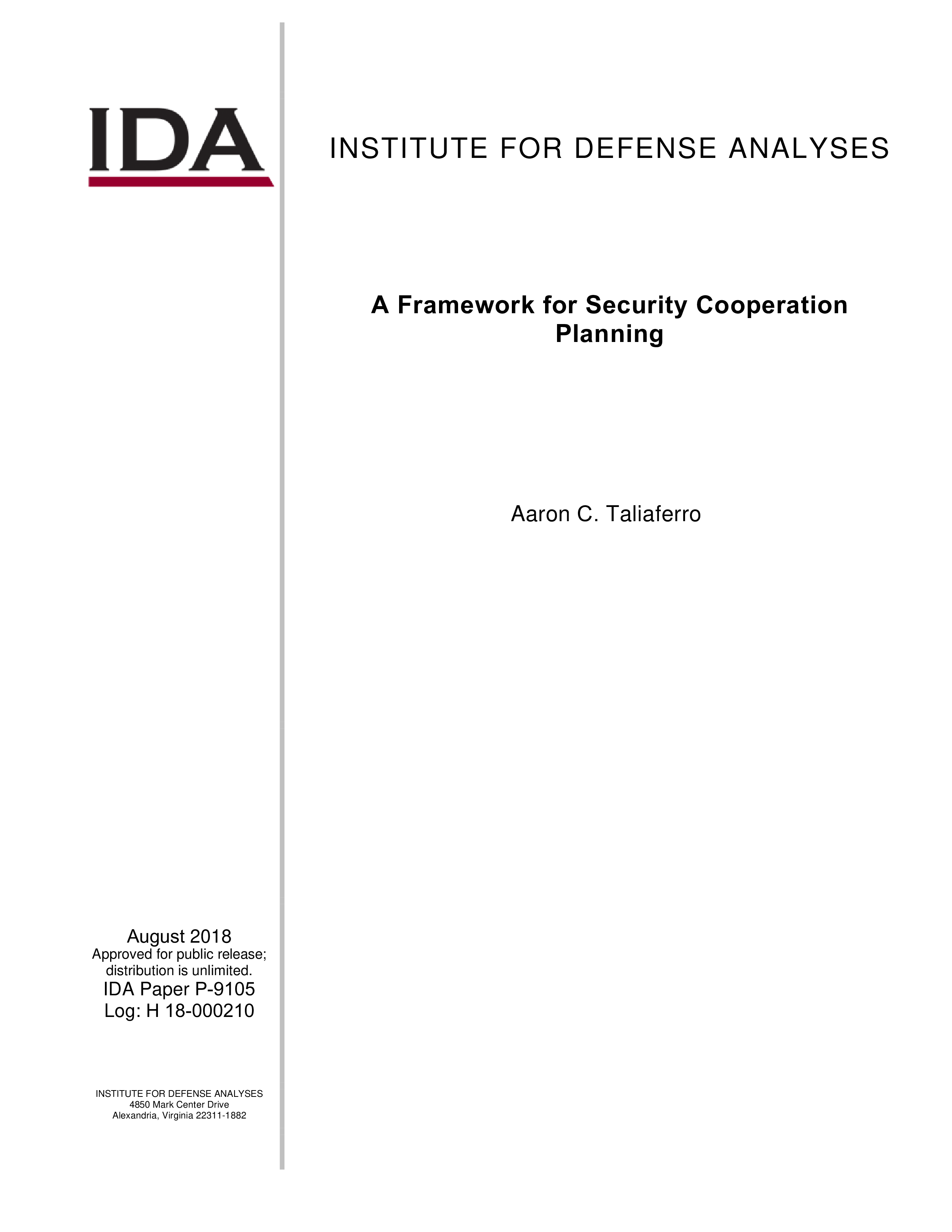A Framework for Security Cooperation Planning
August, 2018
IDA document: P-9105
FFRDC: Systems and Analyses Center
Type: Documents
Division: Strategy, Forces and Resources Division
Authors:
IDA document: P-9105
FFRDC: Systems and Analyses Center
Type: Documents
Division: Strategy, Forces and Resources Division
Authors:
Authors
Aaron C. Taliaferro
See more authors

